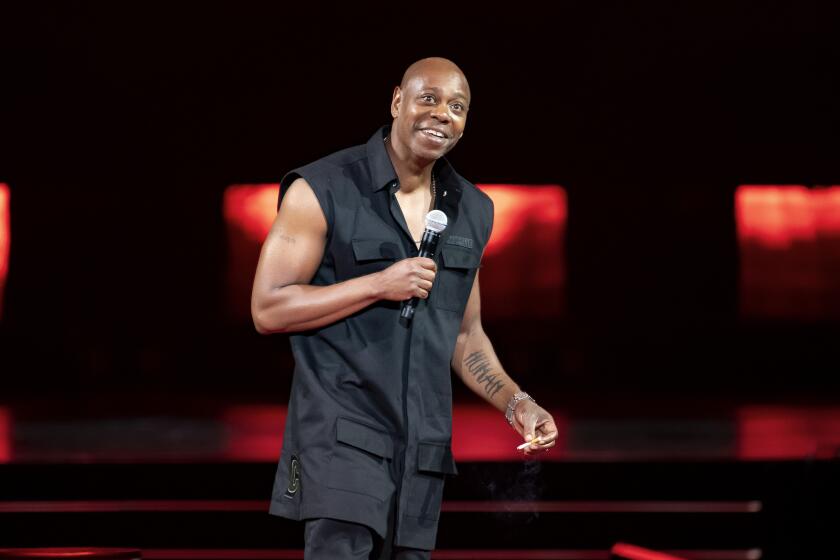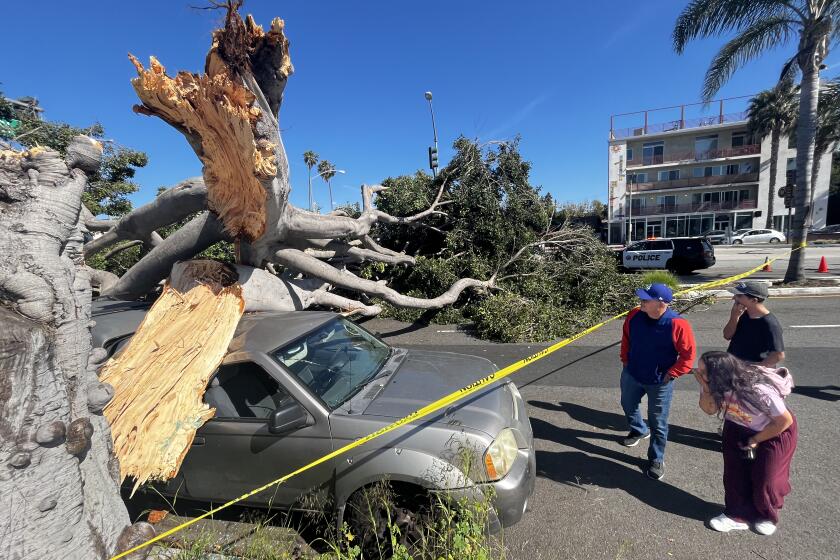Disneyland Showed Improved Handling of Accident, Experts Say
After a deadly accident involving the Columbia sailing ship ride in 1998, Disneyland officials kept police at bay for 4 1/2 hours, letting them onto the scene only after the blood had been washed away. Disney officials escorted witnesses to police and often remained on hand for their interviews.
But Friday, after an accident on the Big Thunder Mountain Railroad killed one person and injured 10 others, it was Disneyland’s investigators who cooled their heels.
More than six hours passed before police and state officials let them onto the accident site.
And in an unprecedented move, Disneyland held a news conference with Walt Disney Co. Chief Executive Michael Eisner publicly offering his condolences and pledging a commitment to ride safety.
It was a dramatic turnaround from Disneyland’s handling of previous accidents and a near-textbook example of crisis management, said those familiar with Disney’s history.
In the past, Disney officials have kept tight control of accident investigations and said little to the public.
“As I watched it unfold, they did it perfectly, saying the right things and giving out as many facts as were available,” said Carl Winston, director of the Hospitality and Tourism Management program at San Diego State University, who watched Disney’s televised news conference on Friday.
“They’ve changed their approach ... almost 180 degrees in terms of cooperating with public agencies.”
Amusement park safety advocate Kathy Fackler, once one of Disney’s outspoken critics, agreed: “There’s been sort of an evolution. It gets better each time. This is the first [accident] where I say, ‘Yes, this is how the system should work.’ ”
The system -- at least the investigative side of it -- has been in place since 2000, thanks in part to Fackler’s lobbying for legislation that requires theme parks to report injuries.
It also empowers the state Department of Occupational Safety and Health to investigate accidents and order changes.
The way Disney secured the site and worked with police and state investigators is “pretty much a model for them” and other parks to follow, said Len Welsh, acting director of the safety agency.
“I’m not sure any of this would have happened without the Torlakson bill,” Welsh said, giving credit to state Sen. Tom Torlakson (D-Antioch), who wrote the legislation regulating amusement parks.
“Once this legislation went through, Disney decided to work with it,” Welsh said. “They have really helped to demonstrate the value of programs like this.”
Since earlier accidents, the resort has contracted for on-site paramedics with Anaheim. Four paramedics, as well as several city police officers, are stationed at the Disneyland resort around the clock.
It took paramedics only two minutes to arrive at Big Thunder Mountain Railroad.
And last year, the company released a 30-page safety report and announced a new chief safety officer.
The injured victims have all been released from the hospital.
The family of Marcelo Torres, 22, will begin making funeral arrangements once his body is released. They have hired Santa Ana attorney Wylie Aitken, who sued Disneyland on behalf of the family in the Columbia accident.
Other victims have retained Stephen Mancini, whose Los Angeles firm Koletsky, Mancini, Feldman & Morrow sued Knott’s Berry Farm on behalf of the family of the woman killed after falling out of Perilous Plunge.
More to Read
Start your day right
Sign up for Essential California for news, features and recommendations from the L.A. Times and beyond in your inbox six days a week.
You may occasionally receive promotional content from the Los Angeles Times.






